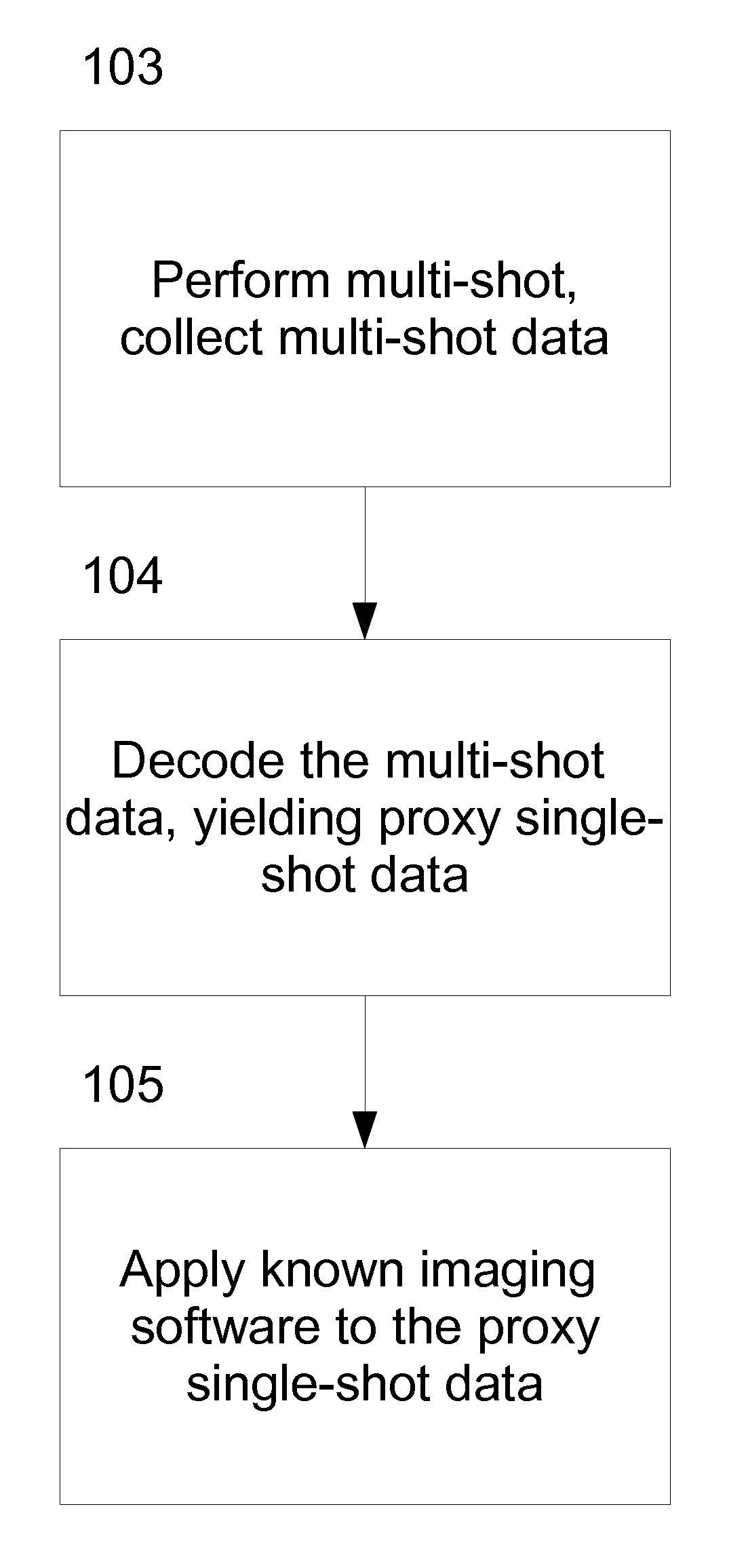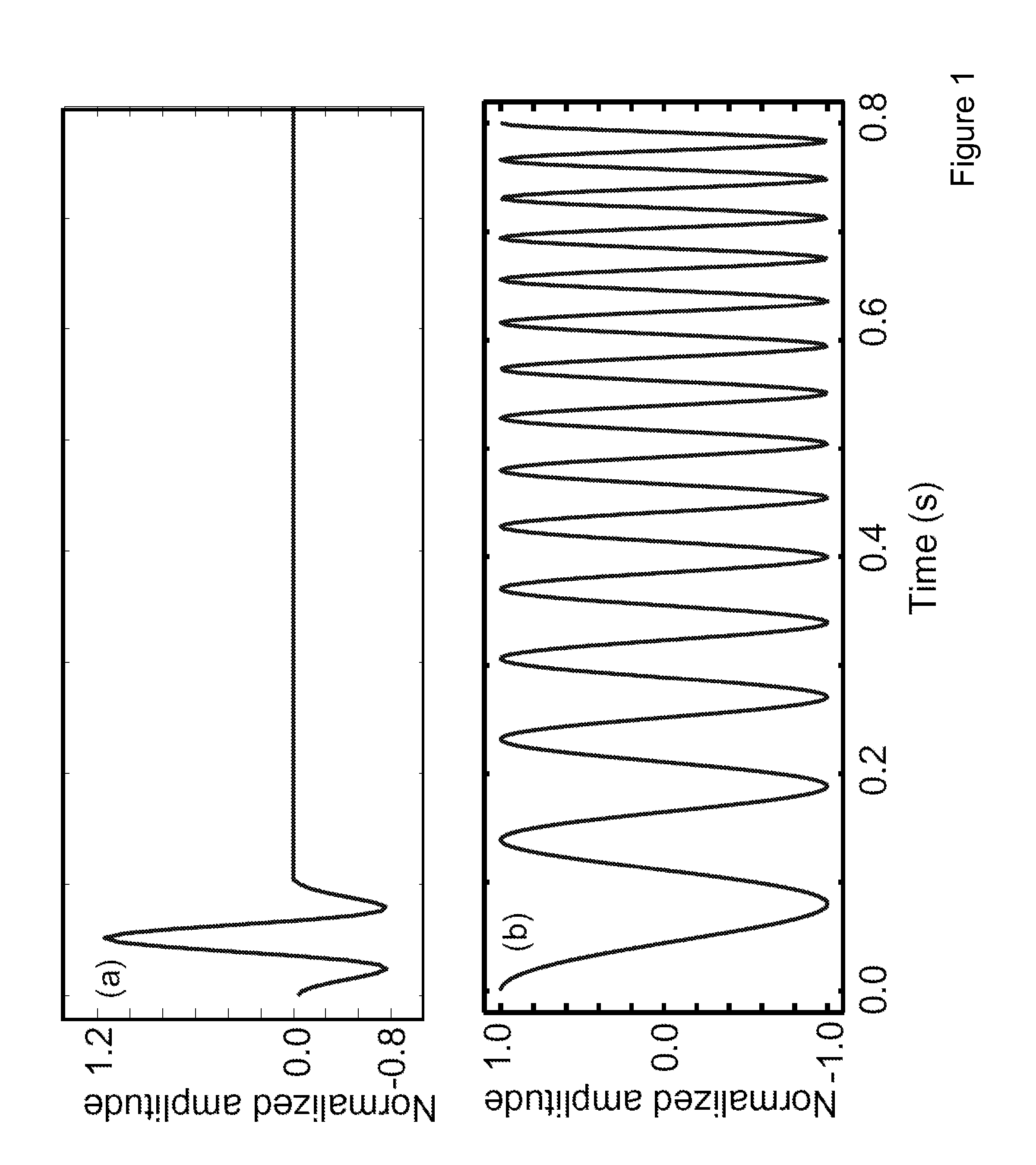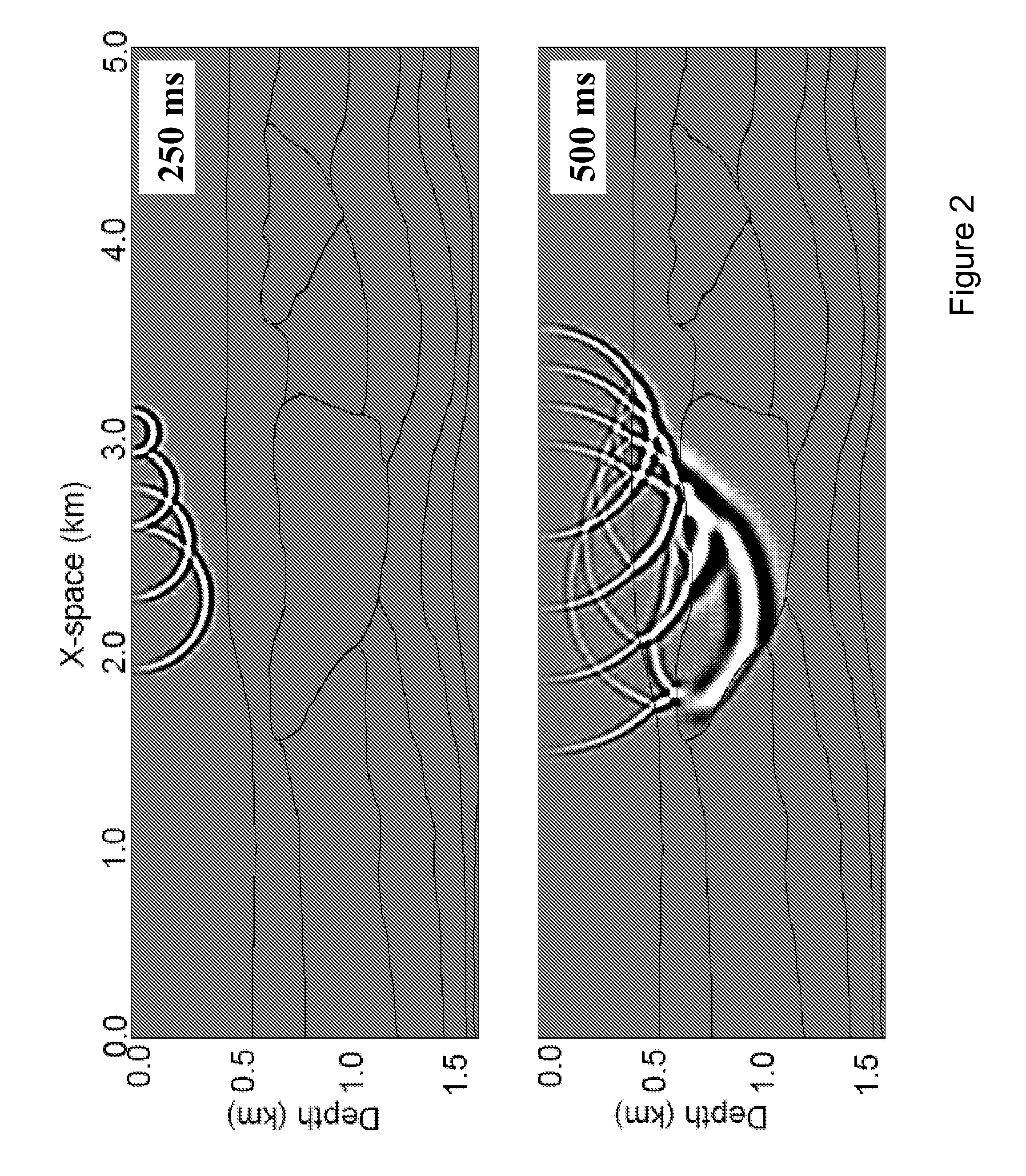Coding and Decoding: Seismic Data Modeling, Acquisition and Processing
a seismic data and acquisition technology, applied in the field of coding and decoding : seismic data modeling, acquisition and processing, can solve the problems of loss of coding features, significant complexity of decoding problems, and signals received after wave propagation in the subsurface as complex as those in communication
- Summary
- Abstract
- Description
- Claims
- Application Information
AI Technical Summary
Problems solved by technology
Method used
Image
Examples
Embodiment Construction
2 AN ILLUSTRAION OF THE CONCEPT OF MULTISHOOTING
2.1 An Example of Multishot Data
[0029]Multishooting acquisition consists of generating seismic waves from several positions simultaneously or at time intervals smaller than the duration of the seismic data. To fix our thoughts, let us consider the problem of simulating I shot gathers. Although the concept of multishooting is valid for the full elastic wave equation, for simplicity we limit our mathematical description in this section to the acoustic wave equation of 2D media with constant density.
[0030]Let (x,z) denote a point in the medium with a velocity c(x,z), (xi,zi) denote a source position, Pi(x,z,t) denote the pressure variation at point (x,z), and time t for a source at (xi,zi). The problem of simulating a seismic survey of I shot gathers corresponds to solving the differential equation
(1c2(x,z)∂2∂t2-[∂2∂x2+∂2∂z2])(1.1)Pi(x,z,t)=ai(t)δ(x-xi)δ(z-zi),withPi(x,z,t)=0,ift≤0.(1.2)
[0031]The subscript i varies from 1 to I. The functi...
PUM
 Login to View More
Login to View More Abstract
Description
Claims
Application Information
 Login to View More
Login to View More - R&D
- Intellectual Property
- Life Sciences
- Materials
- Tech Scout
- Unparalleled Data Quality
- Higher Quality Content
- 60% Fewer Hallucinations
Browse by: Latest US Patents, China's latest patents, Technical Efficacy Thesaurus, Application Domain, Technology Topic, Popular Technical Reports.
© 2025 PatSnap. All rights reserved.Legal|Privacy policy|Modern Slavery Act Transparency Statement|Sitemap|About US| Contact US: help@patsnap.com



